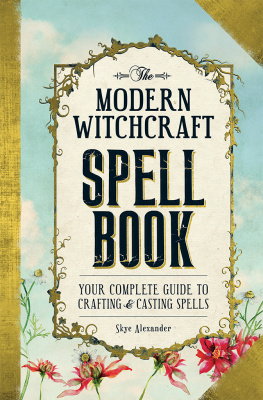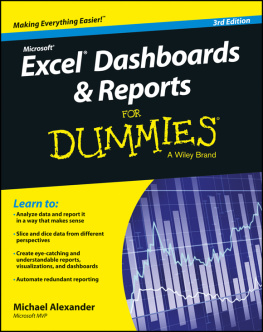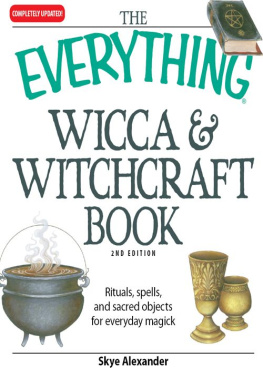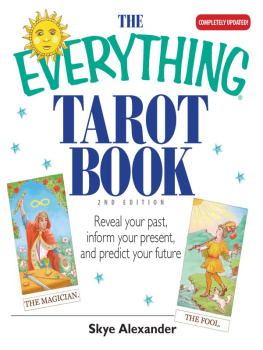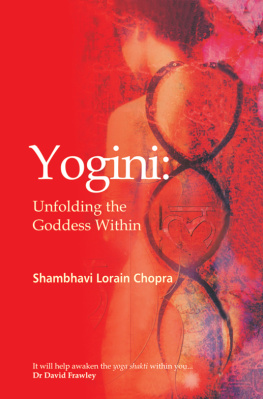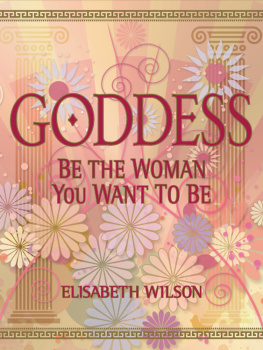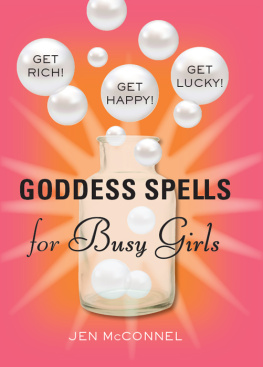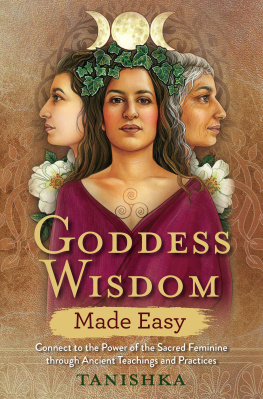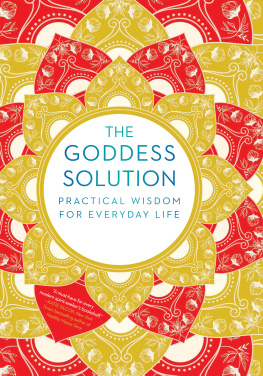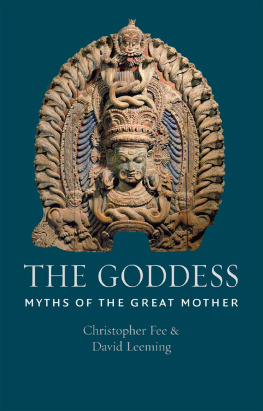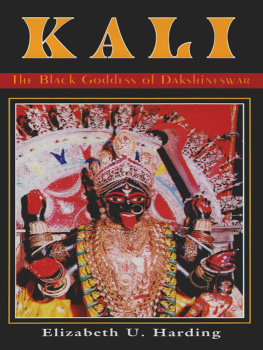Thank you for downloading this Simon & Schuster ebook.
Get a FREE ebook when you join our mailing list. Plus, get updates on new releases, deals, recommended reads, and more from Simon & Schuster. Click below to sign up and see terms and conditions.
CLICK HERE TO SIGN UP
Already a subscriber? Provide your email again so we can register this ebook and send you more of what you like to read. You will continue to receive exclusive offers in your inbox.
CONTENTS


DEDICATION
To all the goddesses in my life: my many women friends, my sisters Myke and Laurie, my nieces Morgan and Ryan, and my Bast-in-residence Zoe.

INTRODUCTION
The Goddess is now returning. Denied and suppressed for thousands of years of masculine domination, she comes at a time of dire need.... Here mythology unexpectedly comes to our aid.
Edward C. Whitmont, Return of the Goddess
Long before written texts and the ascent of the organized religions we know today, the Goddess reigned over all life on earth. She provided her people with food and other necessities; she protected them during birth and death; she guided them in love and war; she taught them art, music, and law. Mythology tells us that the Goddess also formed heaven and earth. In short, the Goddess governed every facet of human existence.
One of the oldest artifacts shaped by human hands is the Venus of Willendorf, a 25,000-year-old figurine of a female that anthropologists suggest may represent a mother/fertility goddess. Archaeologists have also unearthed other goddess artwork from ancient Egypt, Greece, China, and elsewhere. These, along with millennias-old literary works such as the Vedas and the Epic of Gilgamesh , provide information about widespread goddess worship through the ages.
REDISCOVERING HERSTORY
In modern times, were rediscovering herstoryor history viewed from the female perspective. Through this lens we understand the past in a new way and, more specifically, how that past is relevant to our present.
Early cultures were polytheistic, and their legends describe thousands of goddesses, some benevolent and nurturing, others frightening and cruel. Its safe to say there was a deity associated with each and every thing in the known universe. Goddess myths reveal our ancestors concepts of the cosmos; their desires, fears, and values; and the ongoing drama of life on earth. In this book youll meet some of these goddesses and discover their stories. Youll also learn ways to petition the goddesses for assistance and honor them in your everyday life, for they are every bit as real today as they were millennia ago.
As you read the myths recounted in this book, youll see goddesses dealing with the same concerns, challenges, and conundrums that still face us today. Youll witness Heras jealousy, Sednas betrayal, Demeters grief, Rhiannons unfair punishment. And youll marvel at their bravery, wisdom, and compassion.
As you reconnect with the goddesses, youll learn ways to draw upon their powers to cope with your dysfunctional family, the demands of your job, your unsatisfying love life, and the other ups and downs youre experiencing. Whatever your need or purpose, youll find a goddess who can lend a hand.
The Goddess never left us and she never will. Shes still guiding, protecting, and inspiring you, healing your wounds and spurring your courage. Shes here right beside you, inside you, at this very moment. All you have to do is call her name and shell answer.
GODDESS IN MYTH AND LEGEND
I have called on the Goddess and found her within myself.
Marion Zimmer Bradley, The Mists of Avalon
Throughout history, virtually every culture has entertained visions of a heavenly realm populated by beings with supernatural powers. These divine beings were said to watch over the earth and guide human destiny. They also explained natural forces, such as floods and volcanoes, that the ancients couldnt comprehend otherwise.
As our ancestors grappled with the mysteries of existence, they invented myths about the deities who governed everything on earth and in the heavens. The earliest myths described great goddesses who brought the world into being and fertility goddesses who made the crops grow, as well as goddesses who ruled the wind, rain, rivers, and mountains. Over time, the deities roles and characteristics evolved just as human beings evolved. Goddesses guided hunters, warriors, and seafarers; they offered marital advice and delivered babies; they inspired artists, musicians, and poets; they shepherded the dead into the afterlife.
THE GODDESS PERSONIFIED
Since ancient times, people have ascribed to goddesses the characteristics they connected with women. Not surprisingly, myths talk about goddesses of love, beauty, creativity, motherhood, fertility, healing, compassion, protection, and wisdom. However, legends also tell of fierce warrior deities, such as Egypts Sekhmet and the Celts Badb, and terrifying rulers of the underworld, such as the Sumerians Ereshkigal and the Norse Hel. In her book Goddesses in Everywoman , Jean Shinoda Bolen, MD, explains, Myths and fairytales are expressions of archetypes.... The presence of common archetypal patterns accounts for the similarities in the mythologies of many cultures.
Perhaps the most profound and omnipresent symbol of the divine feminine is Mother Earth herself. We see the earth personified as a goddess in all culturesthe Greeks knew her as Gaia, the Inca as Pachamama. Moon goddesses abound in mythology too, for the moon has long been associated with womens reproductive cycles and considered the suns feminine counterpart.
Frequently a goddess plays more than one role. For example, some blend love and fertility whereas others are both protectors and mothers. We even find goddesses whose natures and responsibilities seem contradictory, such as the creator-destroyer deities Pele, Kali, Anuket, and Tiamat, whose dual nature represents the ongoing cycle of birth, death, and rebirth. Hindu mythology considers all goddesses to be aspects of Devi, the feminine force of the universe.
Whatever shes called, however her story is told, the Divine Feminine abides everywhere and in all of us, men as well as women.
DIVINE GODDESS COMBINATIONS
Goddesses often symbolize the three stages of a womans life: maiden, mother, and elder. In mythology we see whats known as the Triple Goddess, a trio of deities who depict these stages. In Greek myths, we have Persephone, Demeter, and Hecate; Branwen, Cerridwen, and the Cailleach in Celtic legends; and Yemaya, Oshun, and Oya in Yoruban folklore. Myths also link the goddess trinity with the waxing, full, and waning phases of the moon.
It is common to see moon goddesses and sun gods paired in some waythe Greeks Selene and Helios, for examplefor the two heavenly bodies symbolize the feminine and masculine forces in the cosmos. Mythological marriages often pair an earth goddess with a sky god, as is the case of the Greeks Gaia (earth) and Ouranos (sky) and of the Yorubans Odudua (earth) and Olorun (sky). In the Egyptian pantheon, however, the goddess Nut rules the sky and her husband Geb governs the earth. Over time, stories of these divine unions have gotten muddied. According to various accounts, a goddesss consort may also be her brother, father, or son.
Next page

